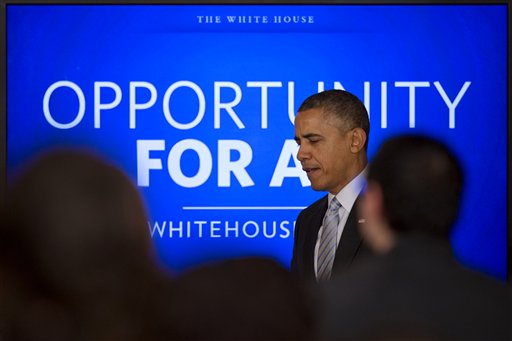In his weekly address last Saturday, President Barack Obama described his proposal to increase the federal minimum wage from $7.25 to $10.10 per hour in language suggesting this would not be a tax increase.
Videos by Rare
“It would lift millions of Americans out of poverty, and help millions more work their way out of poverty, without requiring a single dollar in new taxes or spending,” said Obama.
Perhaps he is right. “Tax” may not precisely describe Obama’s proposal. “Attack” might be more accurate.
Who is targeted by this assault on free enterprise? Industrious young people — those who, historically, have been on their way up in America — and the entrepreneurs who employ them.
On average, according to the Bureau of Labor Statistics, 143,929,000 people were employed in the United States in 2013. Of these, 75,948,000 were paid an hourly wage, and 3,300,000 of those earned at or below the minimum wage. That means only 2.3 percent of American workers earned at or below the minimum wage.
These were concentrated in certain age groups and industries.
1,663,000 — or 50.4 percent — who earned at or below the minimum wage were 24 years old or younger.
Another 436,000 were 25 to 29 years old. The combined 2,099,000 workers 29 or younger who earned at or below the minimum wage accounted for approximately 64 percent of all workers earning at or below minimum wage.
The 1,201,000 workers 30 or older who earned at or below the minimum wage accounted for 36 percent of the 3,300,000 in that wage bracket and only about 0.8 percent of the 143,929,000 Americans employed in 2013.
Call them the less-than-1-percenters.
It remains a fact in the United States that if you start working and keep working until you are at least 30, you will almost certainly get paid more than the government requires an employer to pay you.
So, where do the predominantly young people who earn at or below the minimum wage work?
According to BLS data, one industry dominates. It is what the government calls the food-services-and-drinking-places industry — or restaurants and bars. (This is not surprising given that workers who get tips on the job can be paid less than the minimum wage so long as their combined hourly wage and tips at least equal that wage).
In 2013, 1,610,000 of the workers who earned a wage at or below the minimum earned it in a food service or drinking place. They accounted for about 49 percent of the people earning at or below the minimum wage.
The retail trade industry was the second largest employer of people making at or below the minimum wage. In 2013, it provided jobs to 468,000 people at that pay level.
The combined 2,078,000 who earned at or below the minimum wage in restaurants, bars, and retail equaled about 63 percent of all workers earning at or below the minimum wage.
The restaurant, bar and retail industries have something in common other than employing a large majority of the workers earning at or below the minimum wage: They have unemployment rates higher than the national rate of 6.6 percent. In January, according to BLS, the unemployment rate was 9.3 percent for workers in the food services and drinking places industry and 8.5 percent for workers in the retail trade industry.
Will increasing the minimum wage increase or decrease employment in these and other industries that employ minimum-wage workers? Will it help grow or slow the economy?
The Congressional Budget Office examined a proposal that would phase-in Obama’s minimum wage increase over three years. “Once fully implemented in the second half of 2016, the $10.10 option would reduce total employment by about 500,000 workers, or 0.3 percent,” said CBO.
CBO concluded this federally mandated wage hike would cause a slight short-term boost to the economy followed by a slight long-term drag. “In the long-term,” said CBO, “that reduction in work-force lowers the nation’s output and income a little, which means that the income losses of some people are slightly larger than the income gains of others.”
“For business owners, family income (including income for shareholders) falls to the extent that firms’ profits are reduced,” said CBO. “In addition, real family income for many people tends to fall a bit, because the increase in prices of goods and services reduces families’ purchasing power.”
Hiking the minimum wage means redistributing wealth. It takes money from three classes: Young people working for the minimum wage who will lose their jobs, the business owners employing them and the customers now patronizing those businesses.
© CREATORS.COM



